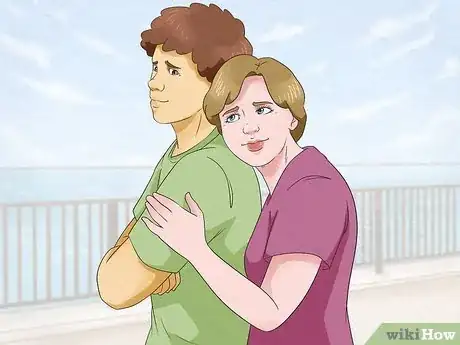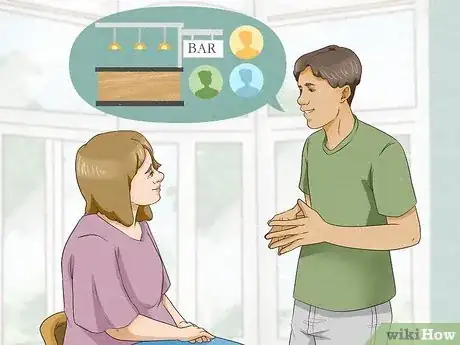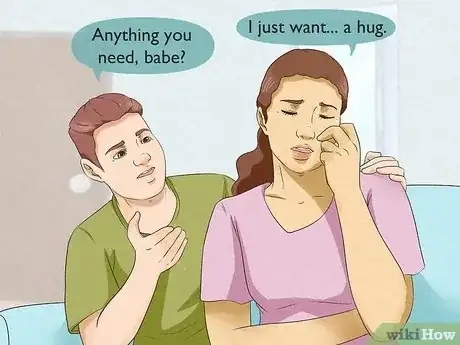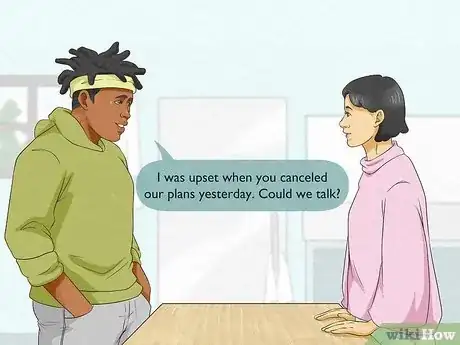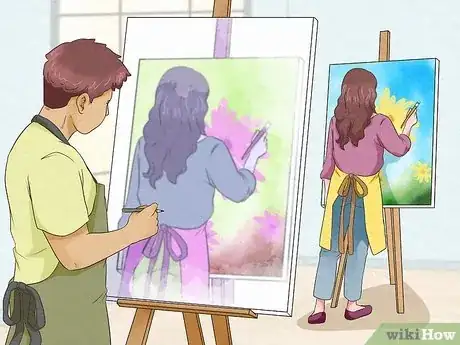This article was co-authored by Casey Lee and by wikiHow staff writer, Hannah Madden. Casey Lee is a Licensed Professional Counselor and Founder of Rooted Hearts Counseling LLC. With over a decade of experience, he specializes in facilitating growth and healing through co-creating safe and secure connections with couples. Casey holds an MA in Clinical Counseling from Columbia International University and is certified in Emotionally Focused Therapy (EFT) which he uses with all his couples. He is also a Level 2 Accelerated Experiential Dynamic Psychotherapist (AEDP) Therapist and a Level 1 trained Sensorimotor Psychotherapy Therapist. Casey is a member of the International Center for Excellence in Emotionally Focused Therapy, the National Board of Certified Counselors, and an affiliate member of the American Association of Marriage and Family Therapy.
There are 7 references cited in this article, which can be found at the bottom of the page.
This article has been viewed 24,263 times.
When you’re in a relationship with someone who has an avoidant attachment style, making them feel safe is the best way to get them to open up, as they often use avoidance as a strategy to protect the relationship.[1] People with this attachment style often shy away from emotions or shut down when it comes to other people’s needs.[2] By making your partner feel safe and accepted, you can get closer to each other and create a loving, fulfilling partnership. Read through this article to learn everything you need to know about avoidant attachment styles and how you can help your partner feel more secure.
Steps
References
- ↑ Casey Lee. Licensed Professional Counselor (LPC). Expert Interview. 20 June 2022.
- ↑ Liana Georgoulis, PsyD. Licensed Psychologist. Expert Interview. 6 September 2018.
- ↑ https://www.helpguide.org/articles/relationships-communication/attachment-and-adult-relationships.htm
- ↑ https://faculty.wcas.northwestern.edu/eli-finkel/documents/InPress_ArriagaKumashiroFinkelVanderdriftLuchies.pdf
- ↑ Casey Lee. Licensed Professional Counselor (LPC). Expert Interview. 20 June 2022.
- ↑ https://greatergood.berkeley.edu/article/item/can_you_cultivate_a_more_secure_attachment_style
- ↑ https://faculty.wcas.northwestern.edu/eli-finkel/documents/InPress_ArriagaKumashiroFinkelVanderdriftLuchies.pdf
- ↑ https://www.mentalhelp.net/blogs/the-importance-of-boundaries-in-romantic-relationships/
- ↑ https://www.psychologytoday.com/us/blog/compassion-matters/201904/do-you-or-your-partner-have-avoidant-attachment-pattern
- ↑ https://www.helpguide.org/articles/relationships-communication/attachment-and-adult-relationships.htm
- ↑ Casey Lee. Licensed Professional Counselor (LPC). Expert Interview. 20 June 2022.
- ↑ Liana Georgoulis, PsyD. Licensed Psychologist. Expert Interview. 6 September 2018.
- ↑ https://www.helpguide.org/articles/relationships-communication/attachment-and-adult-relationships.htm
- ↑ Liana Georgoulis, PsyD. Licensed Psychologist. Expert Interview. 6 September 2018.
- ↑ https://www.psychologytoday.com/us/blog/compassion-matters/201904/do-you-or-your-partner-have-avoidant-attachment-pattern
- ↑ https://greatergood.berkeley.edu/article/item/can_you_cultivate_a_more_secure_attachment_style
- ↑ https://www.helpguide.org/articles/relationships-communication/attachment-and-adult-relationships.htm
- ↑ https://www.helpguide.org/articles/relationships-communication/attachment-and-adult-relationships.htm



